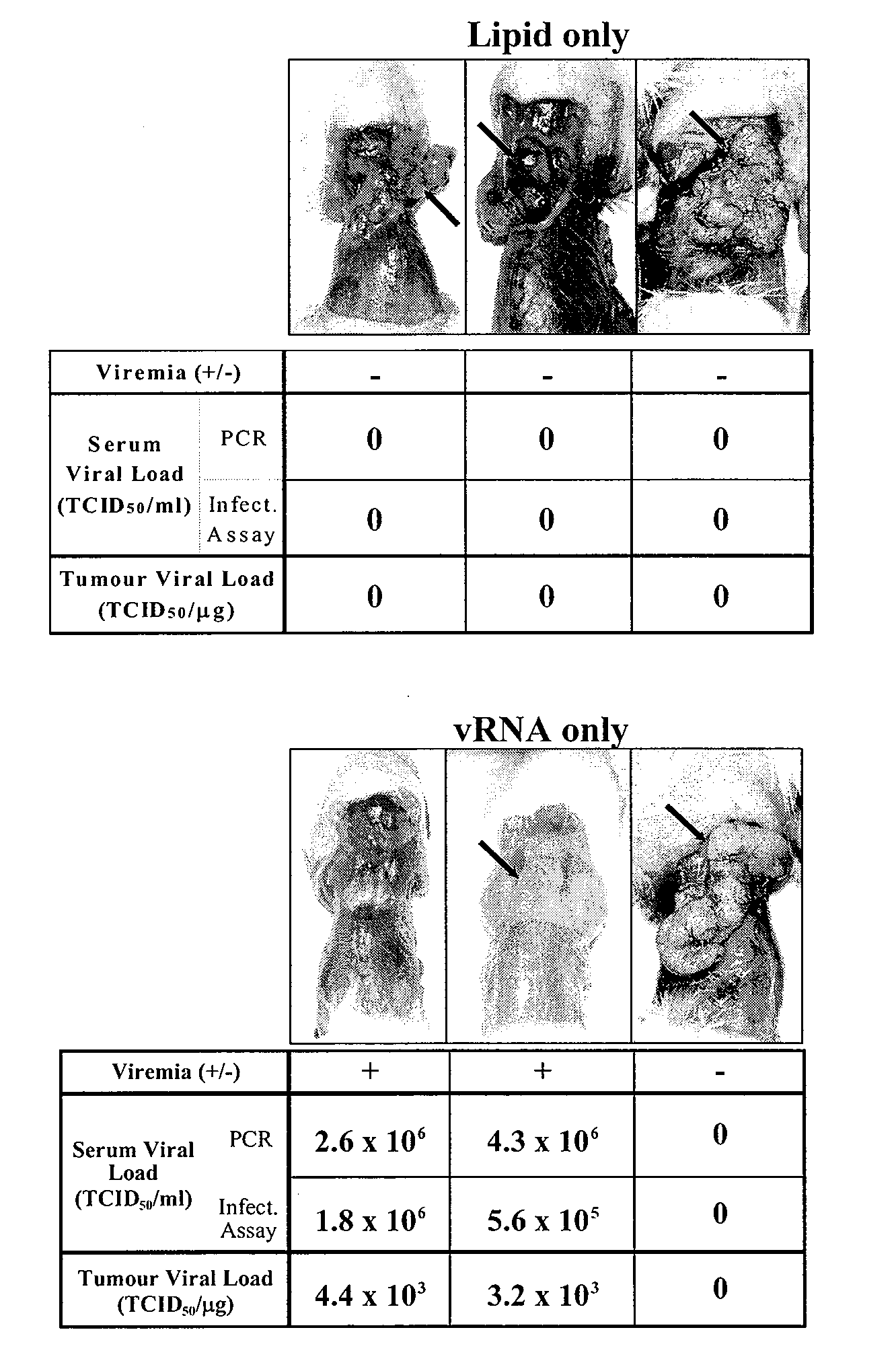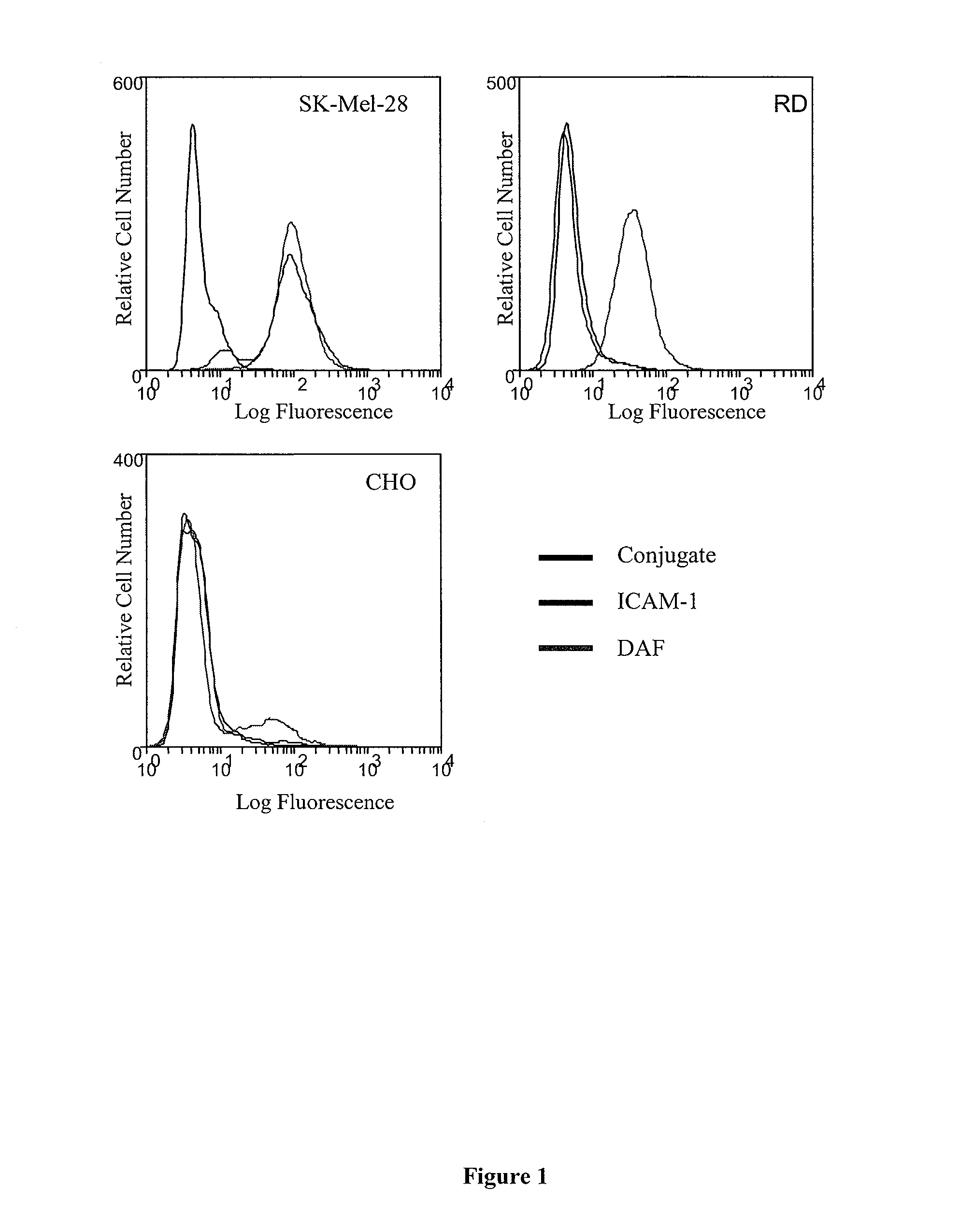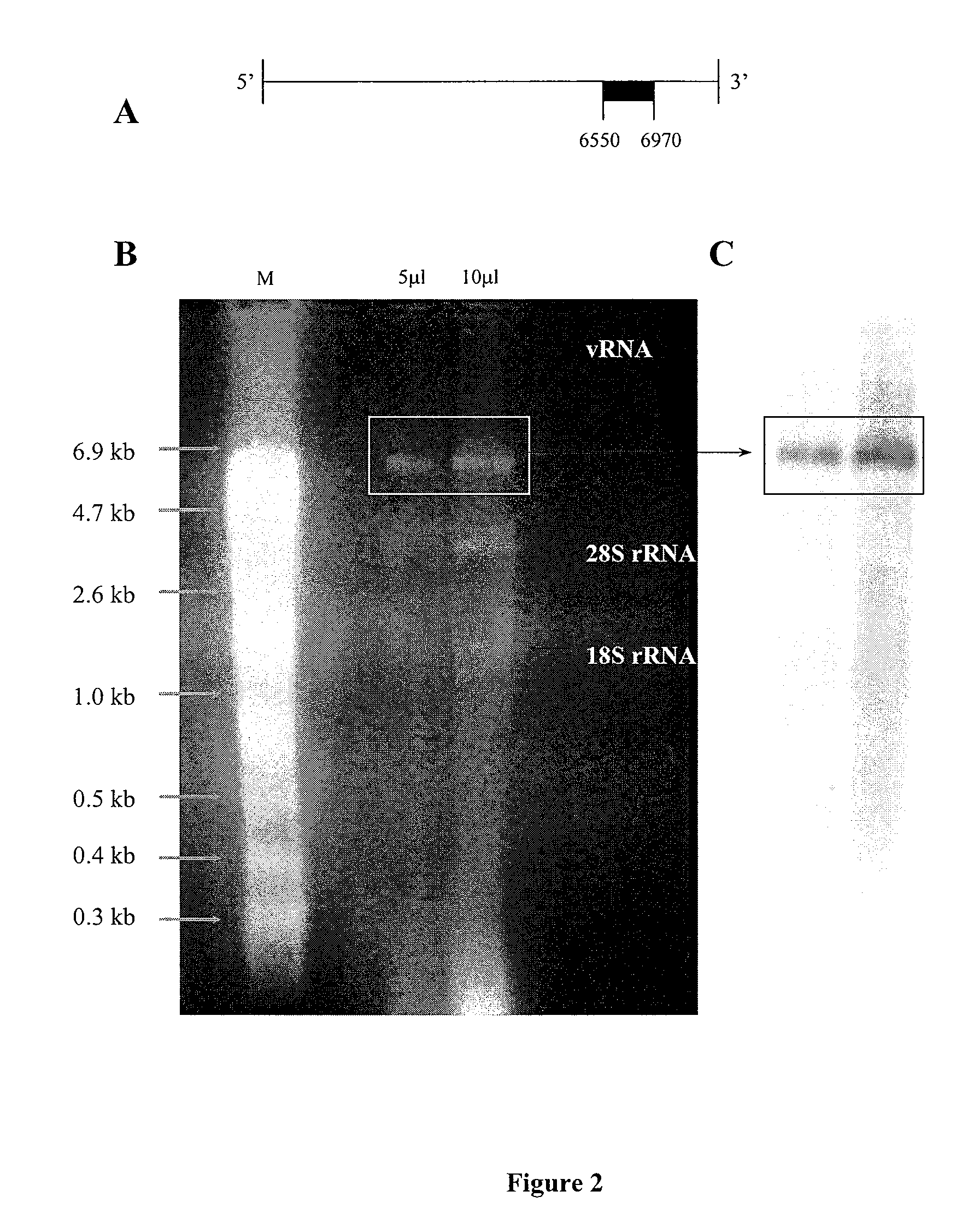Method and composition for treatment of neoplasms
a neoplasm and neoplasm technology, applied in the field of animal neoplasm treatment methods, can solve the problems of melanoma into metastatic mode, significant negative impact on patient survival, and malignant lesion, and current chemotherapy treatments in particular offer littl
- Summary
- Abstract
- Description
- Claims
- Application Information
AI Technical Summary
Benefits of technology
Problems solved by technology
Method used
Image
Examples
example 1
Cell Surface Expression of ICAM-1 and DAF on SK-Mel-28, RD and CHO Cells
[0216]The expression of the Coxsackievirus A21 cellular receptors, intercellular adhesion molecule-1 (ICAM-1) and decay-accelerating factor (DAF) on the surface of cells used in this study were analyzed by flow cytometry. Each cell line was incubated with either an anti-ICAM-1 MAb (WEHI) or anti-DAF MAb (IH4) prior to incubation with a fluorescent conjugate and subsequent laser scanning ICAM-1 expression was detected at high levels on the human melanoma cell line SK-Mel-28, while neither the human embryonal rhabdomyosarcoma (RD) cells nor chinese hamster ovary (CHO) cells expressed ICAM-1. High levels of surface DAF expression were limited to the SK-Mel-28 and RD cells (FIG. 1).
example 2
Characterization of Viral RNA Extracted from CVA21 Virions
[0217]The presence of intact full-length CVA21 vRNA following Trizol® extraction was assessed using denaturing agarose gel electrophoresis. Under ultra-violet light examination, three distinct RNA bands were visualized on the gel, two ribosomal RNA (rRNA) bands (28S rRNA at ˜4.2 kb, 18 S rRNA at ˜2.2 kb), and a viral RNA band at ˜7 kb. (FIG. 2B). The RNA band was transferred to nylon by northern blot capillary transfer and hybridized with a DIG-1′-UTP labeled DNA probe specific for a 420 nucleotide 3′ region of CVA21 RNA (FIG. 2A). An intense band of CVA21 RNA was visualized following hybridization and chemi-luminescent detection (FIG. 2C). The visualized band corresponded to the vRNA band observed on the agarose gel and confirmed the presence of full-length CVA21 RNA.
example 3
In Vitro CVA21 Viral RNA Transfection
3.1. Transfection Optimization
[0218]Various concentrations of Lipofectamine 2000™, a cationic lipid used for cell transfection, were tested for levels of cell toxicity on SK-Mel-28, RD and CHO cells. Lipid volumes ranging from 0.5 μl to 10 μl diluted in 100 μl of growth medium, were added to monolayer cultures of cells (4×104 cells / well) in 24-well plates. Following incubation for 24 hours at 37° C. in 5% CO2, cell monolayers were microscopically examined for signs of cell toxicity. Despite manufacturer's recommendations, high concentrations of lipid (5 to 10 μl / well) were cytotoxic and induced almost complete cell death within 24 hours in SK-MeI 28 cells (FIGS. 3 A and B), RD and CHO cells (data not shown), whereas lower lipid concentrations (0.5 to 3 μl / well) were not toxic to SK-MeI 28. Two microlitres per well was found to be the highest concentration of Lipofectamine 2000™ tolerated by all three cell lines, SK-Mel-28 (FIG. 3C), RD (FIG. 3D),...
PUM
| Property | Measurement | Unit |
|---|---|---|
| volume | aaaaa | aaaaa |
| volume | aaaaa | aaaaa |
| acid | aaaaa | aaaaa |
Abstract
Description
Claims
Application Information
 Login to View More
Login to View More - R&D
- Intellectual Property
- Life Sciences
- Materials
- Tech Scout
- Unparalleled Data Quality
- Higher Quality Content
- 60% Fewer Hallucinations
Browse by: Latest US Patents, China's latest patents, Technical Efficacy Thesaurus, Application Domain, Technology Topic, Popular Technical Reports.
© 2025 PatSnap. All rights reserved.Legal|Privacy policy|Modern Slavery Act Transparency Statement|Sitemap|About US| Contact US: help@patsnap.com



